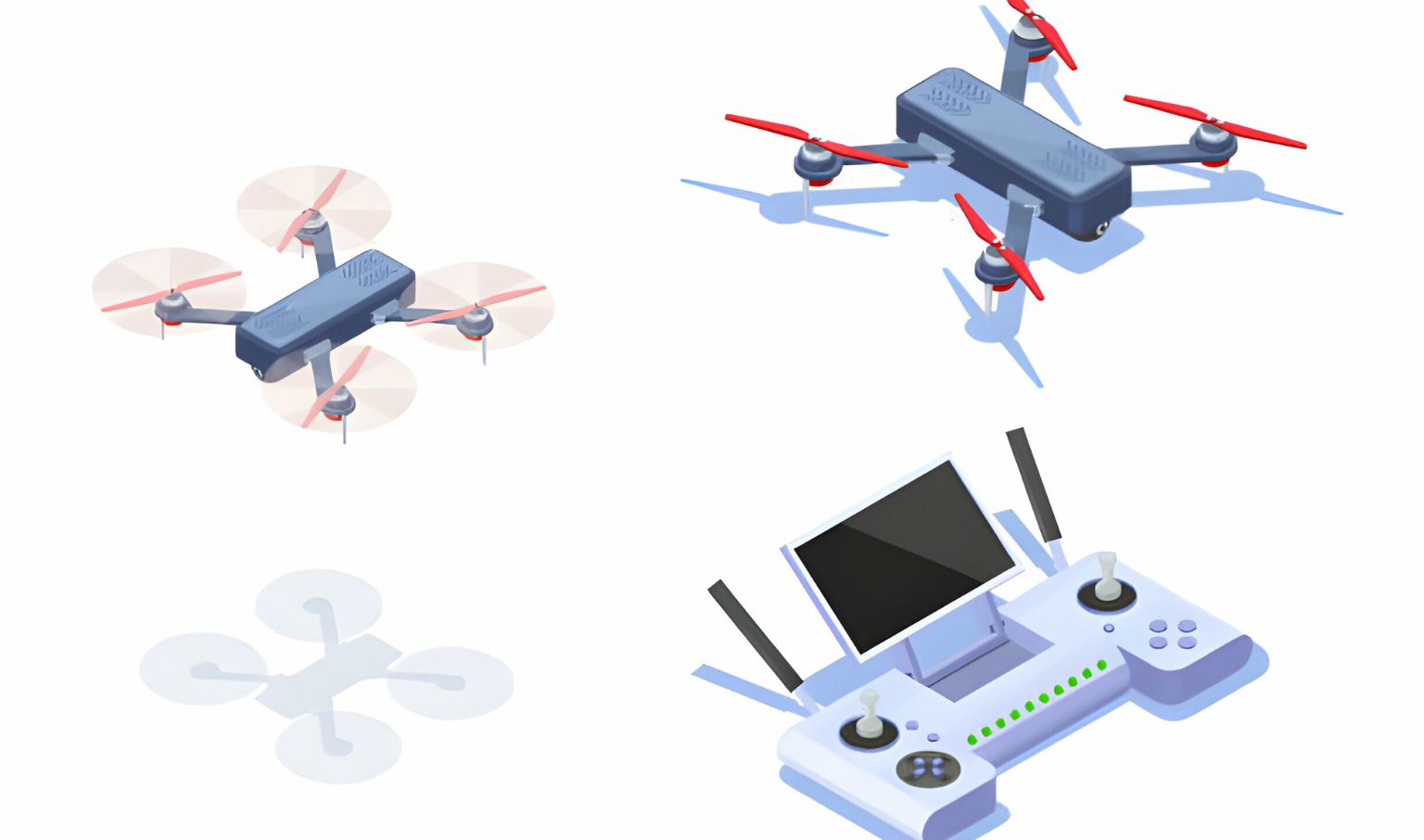A drone inspection refers to using an unmanned aerial vehicle (UAV) called a drone to inspect your property visually. It’s just like taking a bird’s eye view of your property. The drone will thoroughly assess your home’s structures and systems. Being equipped with high-resolution cameras and sensors, it can capture images and data to assess the condition of your property.
Drone inspection is not just another inspection type. It’s way different and beneficial over traditional visual inspections. The drone inspection process ensures the safety of inspectors as they can access risky or hard-to-reach areas without putting the inspectors at stake. This includes tall structures, confined spaces, hazardous environments, etc.
Drone inspection processes are also considered more efficient as they cost less time and expense. And they collect accurate data and clear images. That you can use permanent inspection records to analyze that data over time and identify problems beforehand.
Orange and South Coast Property Services is here to walk you through the detailed drone inspection process. We will guide you about how can drones be used for inspections. Let’s get started first with discussing:
Step-by-Step Drone Inspection Process
Conducting a thorough drone inspection requires careful planning, execution, and follow-up. Here is an in-depth walkthrough of the end-to-end drone inspection process.
Planning and Preparation
The first step is to determine the objectives, targets, and requirements of the aerial inspection. For this purpose, the inspectors will identify which assets need thorough assessments. They know better what types of defects or damage to look for and any site-specific challenges like obstacles or RF interference.
You can use this information to select the right drone, sensors, and accessories for your inspection project. Then, you can map out flight paths and consider battery life, camera angles, and complete area coverage.
Pre-Flight Inspection
The next step is to prepare your site for inspections before the flight. Which your inspectors will set up and calibrate your equipment and charge batteries for the drone and controller.
They will mount necessary sensors like optical, thermal, LiDAR, or ultrasonic devices. And perform preflight checks of communication links, motor rotations, battery voltage, and other key systems. Your inspectors will also consider weather conditions to ensure safe drone operations.
Flight Operations
During the inspection, the inspectors will carefully pilot the drone along the designated flight paths according to plan. They will monitor battery usage and flight parameters. And keep a visual line of sight with the drone when possible, or have an observer assist.
An expert inspector will make slow and controlled movements to facilitate the capturing of videos and images. They’ll take notes on any issues. And follow the airspace rules at all times.
Data Collection
During the drone inspection process, quality images and sensor readings are important. That’s why the inspectors will capture overlapping data from multiple angles and elevations.
They will record defects with close-up shots. And mark areas of interest for reference. If the inspectors are using a multi-spectral camera, they can take baseline normal light images for comparison. They can also enable GPS, combining data with location coordinates.
Post Flight Procedures
After landing, the inspectors follow safety procedures like powering off systems and enabling prop locks. If malfunctions occur in equipment, they will note details for later analysis.
They’ll then download captured data and back up immediately for integrity and redundancy. And take photos to document site conditions if useful. You can perform routine maintenance like cleaning sensors and recharging gear for the next use.
Data Analysis and Reporting
During the drone inspection process, the inspectors can use different inspection software to upload the data and compile images and sensor readings into detailed maps and 3D models. After that, they will analyze and compare baseline data to identify faults, damage, erosion, corrosion, leaks, and more.
They will then share their findings with you by generating detailed reports. And summarize the results and highlight actionable issues.
Follow-up and Maintenance
You can schedule regular drone inspections to monitor your property’s condition over time after repairs. This way, you can improve the efficiency of your inspections with continuous and refined flight plans and methodologies.
How Can Drones Be Used For Inspections
Drones are extremely versatile for inspection tasks. Equipped with cameras, sensors, and analyzing software, drones can thoroughly assess the condition of properties and infrastructure. Here are some of the most common ways that how can drones be used for inspections.
Roof Inspections
Drones provide aerial views of roofing to identify damaged shingles, deteriorated flashing, pooling water, vegetation overgrowth, and more. Without the risk of inspectors falling from height. Thermal drones find leaks, too.
Exterior Inspections
Flying around the perimeter of homes and buildings allows drones to spot different issues. For instance, cracks, broken siding, rotting trim, and foundation issues. Such as settling, pest infestations, and other external defects. These issues can sometimes be missed from the ground.
Property Boundary Surveys
Specialized drones utilize GPS data to map property lines carefully in order to spot encroachments. And quickly settle neighborhood disputes over boundaries.
Gutter and Downspout Inspection
By aerially inspecting gutters, drones pinpoint blockages, leaks, pooling water, and joints in need of repair. So that appropriate maintenance can prevent interior wall or ceiling water damage.
Pool and Deck Inspection
Drones will survey the areas around pools to identify cracks, damaged coping stones, erosion issues, dangerous diving board angles, plumbing leaks, and pool lining holes. The drone inspectors will also assess the deck areas for instability, splintered wood, protruding nails, and more.
HVAC System Inspection
The drone inspection process also helps you determine if HVAC units are sized properly. Thermal drones find units emitting abnormal heat signatures, indicating lower efficiency. They will also inspect your HVAC to ensure it’s not tilted. As you know, those can be more prone to leaking.
Chimney Inspections
High-resolution drone imagery lets inspectors closely examine the entire exterior of chimneys. They will look at your chimney to identify cracks, crumbling bricks, creosote buildup, rust stains, and debris blockages and determine necessary repairs.
The Bottom Line
The drone inspection process provides immense value across countless inspection applications. It can reduce costs and improve thoroughness and safety compared to traditional methods. As the technology advances, even more cases will emerge where drones are used for property assessments and infrastructure monitoring.
So this was your ultimate guide on how can drones be used for inspections. Scroll through our blog section to learn more about inspections.

